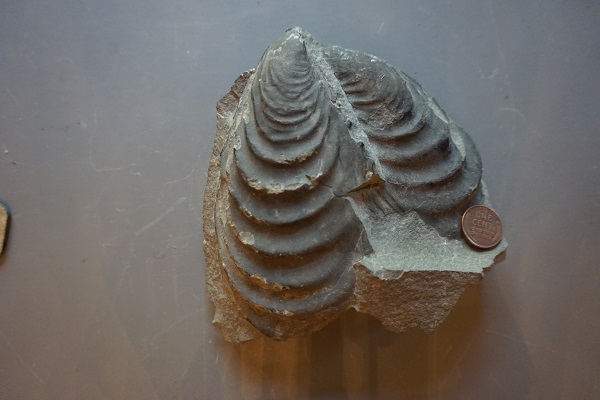Here’s another look at our specimen from last Friday, this time with scale and all:

If you couldn’t identify it before, you probably can now, with those lower lobes in there. It’s a clam! A clam with the completely metal name of Retroceramus lucifer. Why did these clams get such a great name? They weren’t particularly impressive, with a maximum length of ten centimeters. I guess maybe they look very slightly devilish what with the ridges on the shell; maybe they’re a tad infernal in style. I was lucky enough to have some friends (hi, Lance Hall and Sue Massey!) willing to translate German for me so we could figure out if some of the older species descriptions held any more clues. Sadly, our explorations resulted in bupkis... although if you’re really desperately in search of an answer, you might decide figure 4 on page 6 of this document looks a little like devil horns...
The specimen represents an extinct species of an extinct genus of an extinct family—these clams and their close relatives did not make it out of the late Cretaceous. From their fossil record, we can infer that R. lucifer didn’t live too deep in the ocean, that they were abundant enough to be part of the most common family of mollusks in Alaska’s Matanuska Formation, and that they appear to have otherwise led lives exactly as rich, exciting, and fulfilled as we have come to expect from bivalves ever since their first appearance in the Lower Cambrian. The bivalves as a group experienced relatively low levels of extinction in the disastrous late Cretaceous, but this week’s species (and genus, and family) were just not among the fortunate.
The winner this week? Dan Coleman, with remarkable speed! Congratulations, and thanks for playing! If you have a fossil you want to share, send your pictures to me at schoerning at ncse.com.

